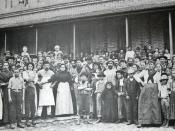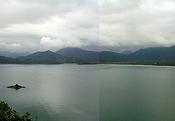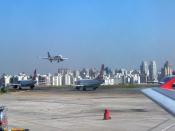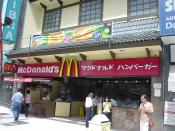The large coffee plantation, or fazenda, still remains an important unit of production in the state of Sao Paulo, where some 30 per cent of total production is from estates which have more than50 000 trees. A typical Sao Paulo coffee fazenda differs markedly from plantations which grow tea, rubber or oil palm in that a consideratble proportion of the area of the estate is not under the commercial crop. In addition, the workforce normally consists of tenants or colons, and each fazenda may support several hundred colono families.
The coffee trees are planted along the ridge tops and upper slopes to avoid the frosts of the valley floor, and so generally the area under coffee is less than half the total area. Valley floors are given over to grass for pasture, fodder crops, food supply crops for the tenants, and sometimes orchards. Large areas are also left in bush.
The estate headquarters, consisting of the home of the owner or manager, the drying floor, storage sheds, stables, and homes of the colonos, are grouped in the valleys, especially near the vallev heads. Large fazendas frequently have several villages of colonos scattered throughout the estate.
Coffee reauires a hot, rainv season for about eight months during which the tree grows and forms berries. Preferably, the rain should come in short convectional showers, thereby allowing adequate sunshine for the plant and work periods for the labourers. The hot rainy season should be followed by a cool dry season with plenty of sunshine to enable the berries to ripen, harvesting to take place, and the berries to be dried on the open drying floors. Once ripe, the berries must be picked without delay in order to avoid spoiling. This means that the fazenda requires a maximum labour force for a short period, with a much smaller workforce requirement for the remainder of the year until the next harvest.
This has resulted in considerable problems for the larger fazendas in Sao Paulo where there has been a growing labour shortage since World War II. In many cases this has forced the subdivision of the estates into smaller mixed farming units.
Apart from labour problems, the fazendas are faced with market problems arising from competition from other coffee producers, notably Colombia and the countries of East and West Africa. Physical problems caused by soil depletion, declining yields, frosts, and pests attacking trees also took a heavy toll of the large fazendas of Sao Paulo in the 1960s. Despite these problems, today this State produces about 45 per cent of the total Brazilian crop, with production in the newer areas of Parana now accounting for about 42 per cent, despite a boom period in Parana in the mid-1960s. this shift away from Sao Paulo points to the effects of soil depletion, frost, and insect damage in the older coffee regions.





